A group of British companies have submitted plans for a mass-produced mini nuclear reactor to Canada, where remote northern settlements could benefit from powerful off-grid supplies of heat and electricity.
Their idea is the “U-Battery”, a compact, uranium-fuelled reactor capable of producing 4MW of electricity and projected eventually to cost as little as $49m.
The consortium, led by uranium fuel maker Urenco and including Laing O’Rourke, Amec Foster Wheeler and Cammell-Laird, has registered its design for a micro-modular reactor with the Canadian Nuclear Safety Commission (CNSC).
It means the U-Battery will get a “pre-licensing vendor review” to see if, in principle, the technology would fit within Canada’s regulatory framework.
For the consortium it is a rehearsal for submissions to other countries’ nuclear authorities.
“This is an important step forwards for U-Battery. It is a mark of the progress we have made in our design, and builds on the significant headway we have made last year in Canada and other international markets,” said Steve Threlfall, U-Battery’s general manager, reports World Nuclear News (WNN).
The consortium aims to have a demonstration unit complete by 2025. As with the larger small modular reactors (SMRs), the unit would be made on a factory assembly line and used to generate both heat and power, possibly in areas that are not connected to a utility grid.
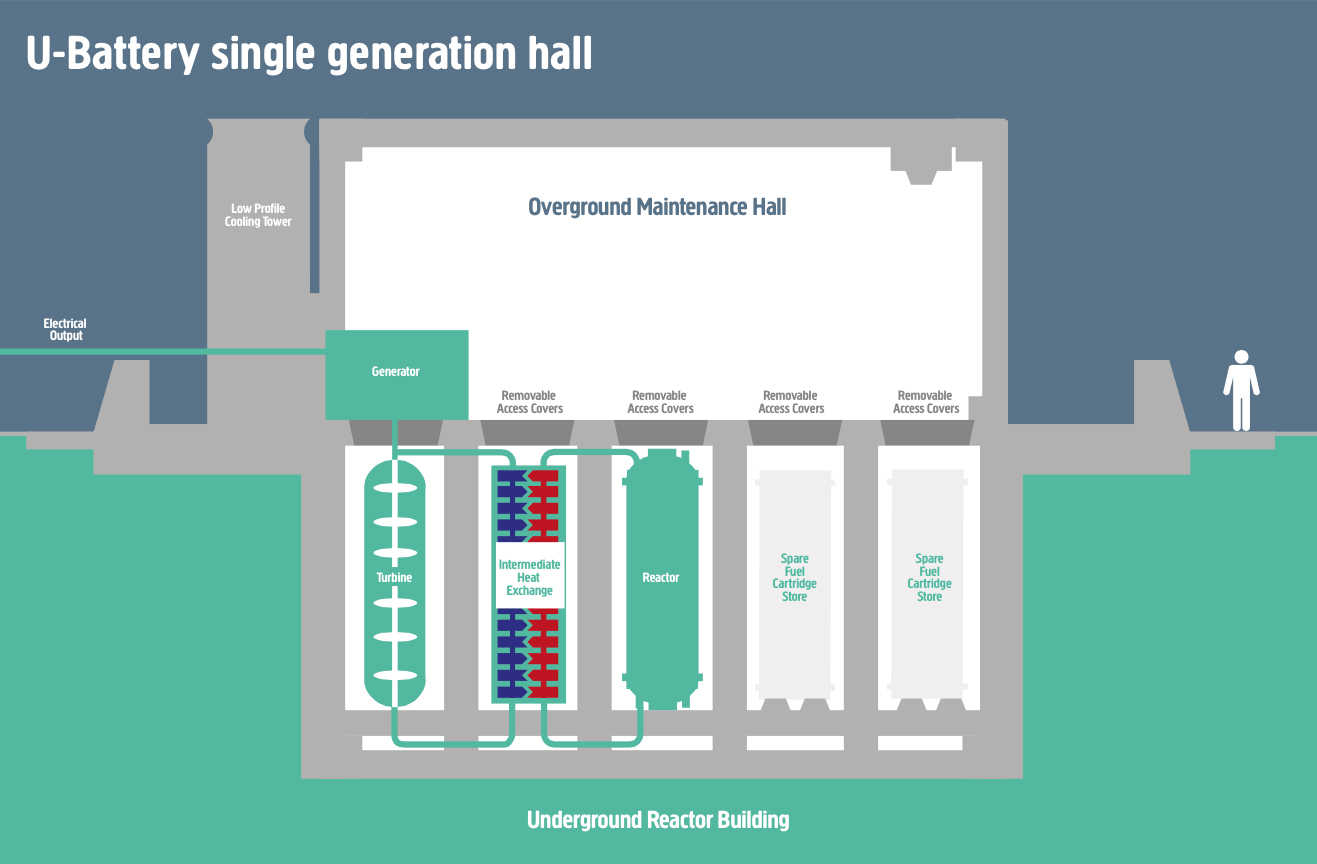
Urenco’s section through a reactor hall. It would be about the size of a football pitch’s penalty area
The design uses “Triso” fuel, made up of pellets of uranium oxide coated in three protective layers to make them safer and easier to manipulate. The reactors would be helium-cooled, and would produce 10MW of thermal energy and 4MW of electricity.
It is estimated that by the fourth iteration, it would have a catalogue price of between $49m and $86m.
The idea for a micro-reactor was proposed in 2008 by Urenco, and the design was developed by the University of Manchester and the Technology University of Delft.
Speaking at the UK Nuclear Industry Association’s conference on SMRs in London on 27 February, Threlfall said the Canadian market for U-Battery could be “very, very large”, with around 300 locations, each requiring between one and six units, WNN reports.
Most of the U-Battery’s components could be supplied from the UK, Threlfall told the comference, although a production facility could be built in Poland, where the consortium signed letters of intent in May last year.
Top image: Just the spot for a self-contained nuclear heat and power plant? Canada’s Diavik diamond mine in the Arctic Circle (GIA)
Further reading:
Comments
Comments are closed.

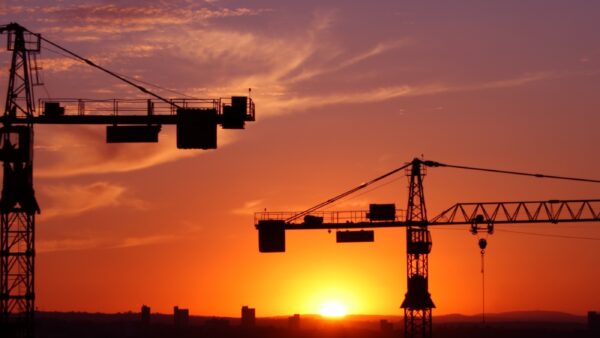
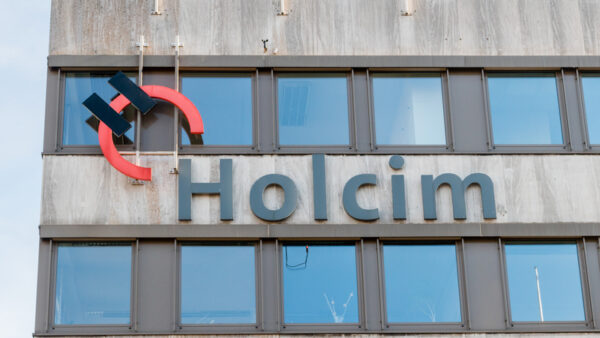
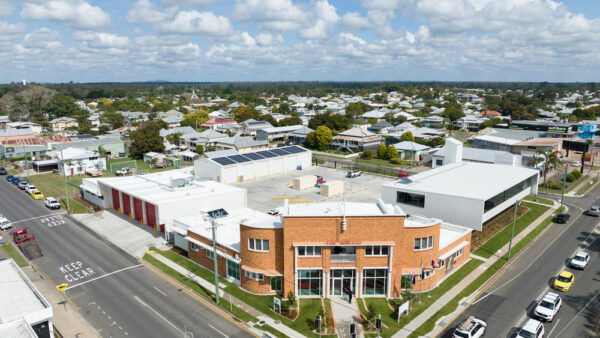
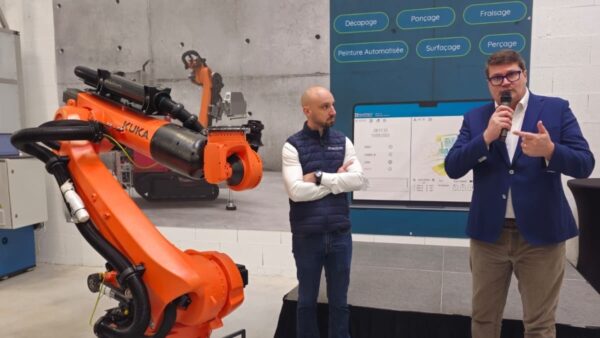
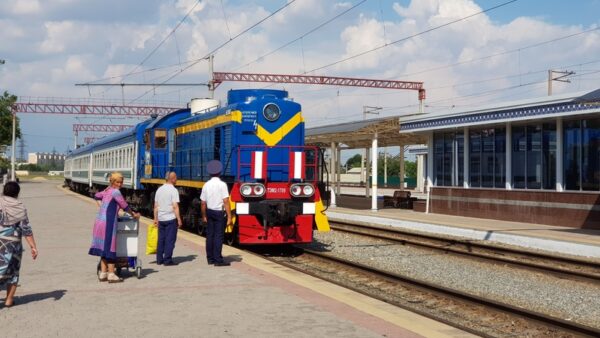
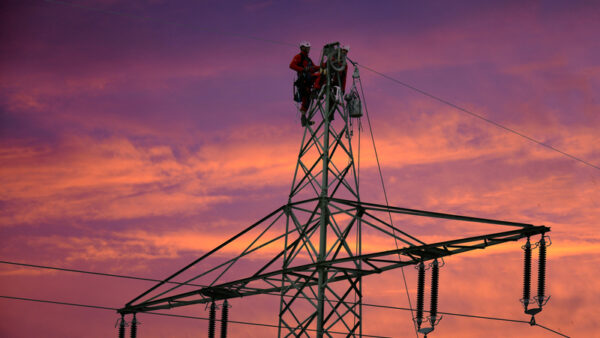
Definitely a good idea if it can reduce the need for diesel power generation in Northern communities.
What they do not also mention is that the 6MW of ‘waste heat’ could be use for district heating or hydroponics for fresh vegetables. http://www.spaceref.com/news/viewpr.html?pid=13724
It could also be suggested that similar power generation might be a good thing for at least one or two polar class ice breakers (promised by Harper, but never delivered).
Paxus, 200 years ago people like you said steam would never replace horses because it was too foolish and expensive. They said the same about automobiles, putting men on the Moon, and wrist-worn communicating devices with powerful computers.
Much of the green lobby is similarly regressive.
This is a horrible idea! We don’t want nuclear reactors of any sort in remote regions of Canada.
Sounds great. And at $49 million each it is only slightly more expensive than “too cheap to meter”.
Good thing this article (which is basically just the companies press release reprinted) is written by people who are highly objective about the project. Unlike all those press releases, for example, about Transatomic which was another SMR vendor which was going to use radwaste as fuel and get 75 times the efficiency from their novel design as regular reactors. Except their not now. [see https://www.technologyreview.com/s/603731/nuclear-energy-startup-transatomic-backtracks-on-key-promises/%5D
Perhaps when reviewing SMRs we would do well to look at the people who have sold more reactors than anyone in the world, Westinghouse. What was there analysis of the SMR market? No customers. [https://funologist.org/2014/02/06/westinghouse-ditches-small-reactors/]
What do we know about SMRs? We know none exist. There are small reactors, they have them in aircraft carriers and nuclear submarines. They are crazy expensive (despite 50 years of design work) and you would never use them outside of a cost plus military situation. We know about modular reactors, the AP1000 is such a design. I say “design” because they have never been able to finish this type of reactor and the ones in China and the southern US are so far behind schedule and so far over budget that Westinghouse is investigating bankruptcy.
Feel free to believe the pie in the sky promises of nuclear sales people who have convinced governments that completely foolish projects are worth investing in. see https://funologist.org/2015/10/20/worst-deal-ever/
And while you are doing that, I suggest you ignore the complete accessible renewable energy solutions which are reliable (with battery storage) and fast and ever increasingly reasonably priced.
All reactors ( large -medium-small modular design ) using fission energy to produce power suffers from the same problem of nuclear spent fuel
disposal. All spent fuel producing fission energy retain 5 % of energy as residual decay heat. The spent nuclear fuel contains radio- isotopes with half lives many thousand of years. These radio isotopes will continue emitting harmful radiation such as alpha, beta and gamma radiation for many thousand of years. These radiations causes many diseases such as blood cancer, heart and lung failures, thyroids, leukemia etc. We have already produced enough radioactive nuclear waste to kill all humanity in less than ten thousand years .
All high level nuclear waste consist of spent fuel from small modular reactors.
We have not solved the high level nuclear waste storage problem for at least 100,000 years yet. It takes 300 years to cool spent fuel from 350 degree centigrade to 60 degree centigrade. After that we can use artificial intelligence ,robots and drones technology to dispense with the nuclear waste generated by small modular reactors.
We need to produce nuclear energy without producing nuclear waste i.e. spent nuclear fuel . I shall say – go with ” COLD FUSION “. It does not produce any nuclear waste. Did I make myself clear !!!